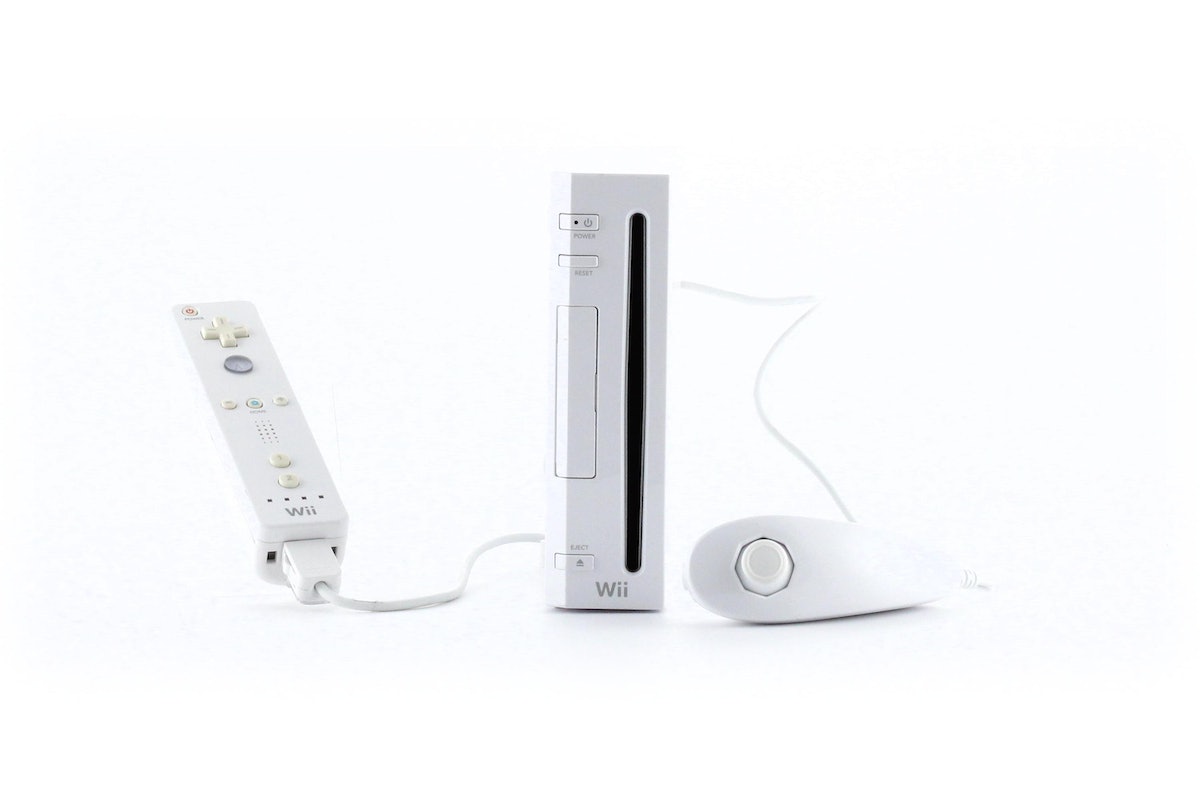Nintendo
2006
Hardware
Media Archaeology Lab
Label written by Heather Cook
“Wii sounds like ‘we’,” Nintendo stated in the product’s 2006 inaugural announcement (Carless 2006). Hoping to design a device that could appeal to all demographics of people, Nintendo president Satoru Iwata proposed a motion-sensing interface that would increase user accessibility (2004). The results of Iwata’s efforts can be seen in the one-handed, battery-powered remote, pictured left of the console, and its optional nunchuck extension, pictured right, which allowed users to engage in new forms of interactive gameplay.
Selling over 101 million units before its discontinuation in 2013 (Reynolds, 2022), the Nintendo Wii marked a new era of entertainment, bridging the gap between virtual and physical landscapes with games such as Just Dance, Wii Sports Resort, and Mario Kart. In the presence of this original 2006 Wii, viewers are encouraged to reflect upon the times spent dancing, playing, and arguing with siblings over who got to control the main remote on lazy Sundays and hot summer days.
While its physical form is perhaps not the most visually exciting–all white, simple buttons, sharp edges–the value of the Wii never originated from its outward appearance, but from the joy that it evoked and the memories that it created for all who played it.
Image citation:
- Media Archaeology Lab, Nintendo Wii, Creative Commons: Attribution, Non-Commercial
Resources
- Carless, Simon. “Breaking: Nintendo Announces New Revolution Name – ‘Wii.’” Game Developer, April 26, 2006. https://www.gamedeveloper.com/game-platforms/breaking-nintendo-announces-new-revolution-name—wii-.
- Reynolds, Ollie. “Nintendo Switch Has Now Sold over 107 Million Units.” Nintendo Life, May 10, 2022. https://www.nintendolife.com/news/2022/05/nintendo-switch-has-now-sold-over-107-million-units.
- Staff, IGN. “Profile: Satoru Iwata.” IGN, July 16, 2004. https://www.ign.com/articles/2004/07/16/profile-satoru-iwata?page=3.



